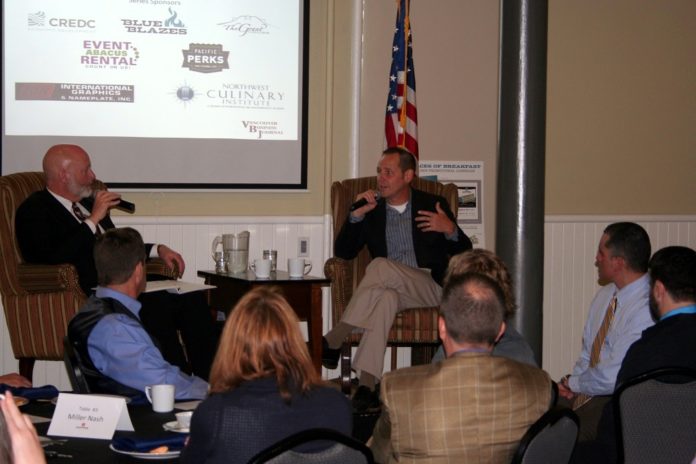1. Coleman was raised in Quincy, Washington. He said growing up in a small town on the east side of the Cascades helped him form a good work ethic.
2. He has three daughters, and spends most of his weekends attending equestrian shows with his family.
3. Where did the idea for an oil terminal come from? Coleman said the port looked at market demand and its existing, underused facilities, and an energy terminal seemed to match up well with those things.
4. Coleman said seven companies responded to the port’s Request for Proposal for an energy terminal. Tesoro-Savage Joint Venture was chosen because “we felt they best addressed safety concerns.” The port also had a good, existing 28-year relationship with Tesoro as a port tenant.
5. The West Vancouver Freight Access Project, which Coleman said will be finished next year, brings the number of rail cars the port can handle each year from roughly 50,000 to over 400,000. “That’s a huge difference,” he said.
6. With the Tesoro-Savage oil export terminal, Coleman said the port has the chance to increase annual revenue by 100 percent.
7. What about safety concerns over the transportation of crude oil? Coleman said, “I completely get the fact that the transport of crude oil has become a bigger issue and it has been highlighted by some significant problems. We have been participating with our federal legislators and different associations and really trying to promote [safer rail cars].”
8. In response to the idea that the proposed export terminal will have a negative impact on Vancouver’s waterfront project, Coleman said, “The terminal is two miles away, so I don’t think it’s the terminal that is causing any problems with the waterfront. There are three crude oil trains of this exact commodity moving through the community today. Those will increase. They go through at about 10-15 MPH and most people don’t even notice that they’re going through.”
9. In addressing waterfront development concerns, he added, “I have to believe that the developer took a hard look at the site and that he could see that berm and the rail cars moving by when they were doing their due diligence. So it’s nothing new other than we’ve got a [safety] issue that we have to deal with, and we agree with that issue.”
10. When asked how the “onshoring” of jobs affects the port since 80 percent of its volume involves exporting, Coleman said, “We don’t export a lot of manufacturing… Our export volumes are mostly corn, wheat, soybeans, iron ore, pulp paper products and those types of things. So really it doesn’t hurt us that much, but it is an interesting dynamic.”
For information on our next Boardroom session, visit our events page.









